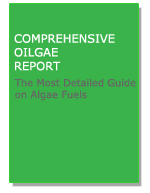Blue Green Algae
Blue-green algae (one of eleven groups of algae) are microscopic
plants that grow mainly in brackish ponds and lakes throughout the world. Of
the more than 1500 known species, some are useful as food, while others have
been reported to cause gastroenteritis and hepatitis.
Blue-green algae can be considered as simple aquatic
plants that occur naturally in habitats such as rivers, lakes, damp soil,
tree trunks, hot springs and snow. They can vary considerably in shape,
colour and size.
The two most common species of blue Green algae used for
human consumption are Spirulina maxima and Spirulina platensis. Spirulina is
particularly rich in protein and also contains carotenoids, vitamins,
minerals, and essential fatty acids.
Spirulina is being developed as the "food of the
future" because of its amazing ability to synthesize high-quality
concentrated food more efficiently than any other algae. Most notably,
Spirulina is 65 to 71 percent complete protein, with all essential amino
acids in perfect balance. In comparison, beef is only 22 percent protein.
Blue-green algae are bacteria
Despite their name, blue-green algae are actually types of
bacteria known as Cyanobacteria. In external appearance and requirements for
light, nutrients and carbon dioxide, they are similar to algae. They normally
look green and sometimes may turn bluish when scums are dying. Taste and
odour problems commonly occur with large concentrations of blue-green algae
and some species are capable of producing toxins.
About the Blue-green Algae Blooms
- When conditions are optimal, including light and temperature, levels of nutrients (i.e., phosphorous and nitrogen, and the ratio of the two), and lack of water turbulence, blue-green algae can quickly multiply into a bloom.
- Blue-green algae blooms are likely to occur more often in warmer months
- When some blooms occur in water bodies, exposure to the blue-green algae and their toxins can pose risks to humans, pets, livestock and wildlife. Exposure may occur by ingestion, dermal contact, and aspiration or inhalation
- Risks to people may occur when recreating in water in which a blue-green algae bloom is present, or from the use of drinking water that uses a surface water source in which a blue-green algae bloom is present
- Exposure to blue-green algae can cause rashes, skin and eye irritation, allergic reactions, gastrointestinal upset, and other effects. At high levels, exposure can result in serious illness or death
- Depending on the particular cyanobacterium, and the amount to which one is exposed, blue-green algae have the potential to cause a variety of adverse health effects, including liver toxicity (e.g., Microcystis aeruginosa) and neurotoxicity (e.g., Anabaena circinalis). Microcystin toxins may also promote tumor growth
- Destruction of Cyanobacteria cells may release the toxins into surrounding waters, so care must be taken in dealing with blue-green algae blooms
- These threats are not just theoretical. Several dog deaths have been reported following the dogs' exposure to blue-green algae in water bodies.
- Worldwide animal poisonings and adverse human health
effects have been reported.
Web Resources
- What is Blue-Green Algae AFA: Aphanizomenon flos-aquae (AFA) Blue-green algae is the first protein and most ancient food on earth. At the bottom of the food chain, it is the most nutrient-rich food (ounce for ounce) known to be created by nature. This simple organism is complete nutrition in its most basic form - the "building blocks of health".
- Aphanizomenon Flos Aquae: An ancient blue-green Microalgae has popularized this nutrient dense whole food that contains more protein, B12 and chlorophyll than any other food source.
- Aphanizomenon flos-aquae in Klamath Lake: There are over 30,000 species of algae, 6000 are classified blue-green. Blue-green is the oldest form of algae. It's said to have been the first organism on Earth to photosynthesize (use the energy of the sun to make food for itself). Blue-green algae is what scientists search for first when they're looking for life on other planets because blue-green algae is what gets the whole process started
- Blue Green Algae (Spirulina Sp.): Blue green algae has been used for weight loss and as a nutritional supplement. Blue green algae has also been used for boosting the immune system and for controlling cholesterol levels. Some herbal/diet supplement products have been found to contain possibly harmful impurities/additives. Check with your pharmacist for more details regarding the particular brand you use. The FDA has not reviewed this product for safety or effectiveness. Consult your doctor or pharmacist for more details.
- What does blue-green algae do?: Blue-green algae, of which spirulina is a well-known example, is a group of 1,500 species of microscopic aquatic plants. The two most common species used for human consumption are Spirulina maxima and Spirulina platensis. Spirulina is particularly rich in protein and also contains carotenoids, vitamins, minerals, and essential fatty acids.
- What Is Spirulina: Spirulina is a blue-green algae. It is a simple, one-celled form of algae that thrives in warm, alkaline fresh-water bodies. The name "spirulina" is derived from the Latin word for "helix" or "spiral"; denoting the physical configuration of the organism when it forms swirling, microscopic strands.Where is it found?: Blue-green algae grow in some lakes, particularly those rich in salts, in Central and South America, and Africa. They are also grown in outdoor tanks specifically to be harvested for nutritional supplements.
- Blue-Green Algae (Cyanobacteria) Blooms: Blue-green algae (cyanobacteria) are any of a number of species of microscopic bacteria that are photosynthetic. They may exist as single cells or groups of cells. They occur naturally in surface waters.
- The Blue-Green Algae (Cyanobacteria): The algae are the simplest members of the plant kingdom, and the blue-green algae are the simplest of the algae. They have a considerable and increasing economic importance; they have both beneficial and harmful effects on human life. Blue-greens are not true algae. They have no nucleus, the structure that encloses the DNA, and no chloroplast, the structure that encloses the photosynthetic membranes, the structures that are evident in photosynthetic true algae.
- Monitoring for Blue-green Algae: Human Health issues in the Lake Champlain Basin: blue-green algae.
- Blue-green algae supplements: Blue-green algae supplements come in the form of capsules, pills, and powders. An important part of the food chain in lakes and ponds worldwide, blue-green algae are microscopic plants with characteristics of both bacteria and algae (such as seaweed), but are more closely akin to bacteria.
- Why should you eat the Blue Green Algae?: The algae contains Floridan Starch, multiple vitamins, minerals, trace minerals, beta carotene, chlorophyll and essential fatty acids. Latest research shows that the algae is a good dietary source of omega-3 and -6 fatty acids, and these precious ingredients may be more readily bioavailable to us than vitamin supplements made in a laboratory.
- Blue-Green Algae: Spirulina has many potential medicinal uses. First, it contains antioxidants such as beta carotene and zeaxanthin. Antioxidants are thought to protect body cells from damage caused by a chemical process called oxidation, which breaks foods down into components the body can use for energy.
- Blue-green algae (Anabaena flosaquae) Toxicity Studies: Blue-green algae (Anabaena flosaquae) Toxicity Studies - Toxicology studies from the primary scientific literature on aquatic organisms.
- Toxic Algal Blooms A Sign Of Rivers Under Stress: The decomposition of dead blue-green algal cells by bacteria consumes oxygen. When billions of such cells die during a bloom, the water becomes oxygen-depleted. This can lead to the death of other marine organisms, including fish, which need oxygen to survive. As well, the blue-green algae contain toxins that affect human and animal health.
- Blue Green Algal Toxicity: Blue-green algae have been known to be a cause of toxicity in lakes, ponds and dugouts for over 100 years, since the first poisoning cases were recorded. Cases of animal poisonings have occurred all over the world, including Alberta. Continuing research has shown that blue-green algae can produce different types of toxins or poisons. Only a few of the toxin-producing blue-green species are normally abundant in central Alberta lakes. Fortunately, these few species are toxic only on occasion because each species may have many strains and only some strains.
- Blue-Green Algal Blooms in Lakes: This brochure has been produced to answer the more frequent enquiries received by the Ministry of Environment, Lands and Parks (now called Ministry of Water, Land and Air Protection) on blue-green Algal Blooms in lakes and to provide you with general information on related water management concerns.
Other Related Sections
Blue Green Algae, Red Algae, Green Algae, Marine Algae, String Algae, Pond Algae, Pond Algae Control, Algae Control; Algae World of Algae
Energy & Alternative EnergyEnergy
Portal Discussed topics such as alternative & renewable energy,
peak oil, energy industry inventions & discoveries, and more.
Energy Sources - Main Sections






